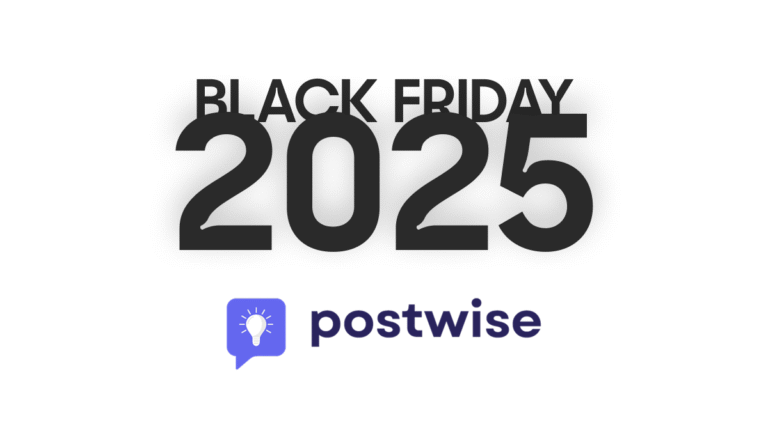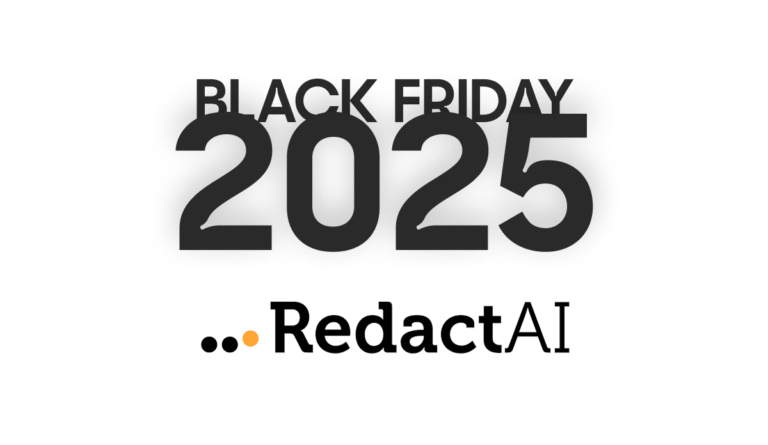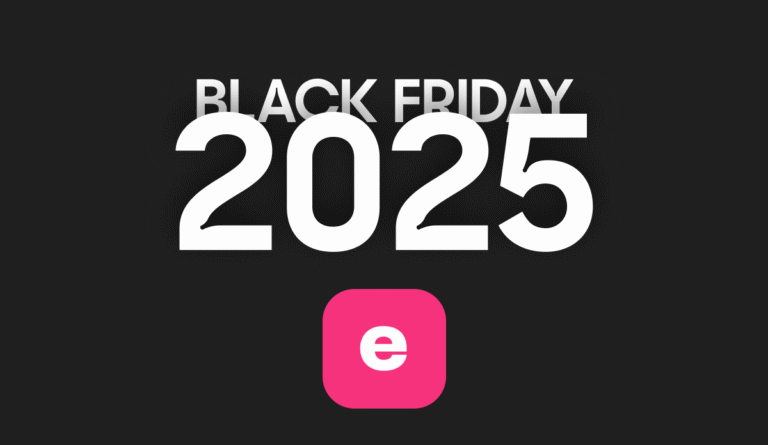A billion people are on LinkedIn in 2025. Yet only 1% create content regularly, and they capture almost all the attention. The good news? You don’t need to become a daily poster to get noticed. Just one line, your headline, can lift profile views by 40% and generate 5× more recruiter messages if done right.
I remember staring at my profile, wondering why nothing was happening. Recruiters ignored me and search appearances stayed low. Every tweak to my headline felt pointless.
Then I came across a user quote that nailed it: “People try to get fancy with creative titles, which are cringeworthy… unless there is a way to do this without sounding like a pompous douche, I have no desire to go this route.” That summed up the challenge perfectly.
This guide is my answer, where I’ll share the formula that actually works in 2025. We will explore the industry-specific templates recruiters are really searching for, and the mistakes that quietly kill your visibility.
By the end, you’ll know exactly what to put in your LinkedIn headline and how to test it so it keeps bringing in results week after week.
The LinkedIn headline formula that actually works (backed by 2025 data)
I used to think a headline had to be clever. In reality, the profiles that get seen follow a simple structure:
[Job Title] | [Skills/Keywords] | [Value Proposition/Results]
That’s it, straightforward and concrete. Just a clear line that tells recruiters exactly who you are, what you know, and what you deliver.
One user put it perfectly: “Template plus numbers is what worked. Simple, clear, and got me interviews, after months of nothing.” That’s the magic of this approach. Add skills recruiters actually search for, then prove impact with a number or outcome.
For example:
“Product Manager | Agile, Data Analytics | 20% Faster SaaS Launches”
Why it works: LinkedIn’s search relies on keywords. With 52 million people job hunting weekly and 77% of recruiters searching daily, visibility comes down to whether your headline matches the words they type. If your skills or results aren’t in that 220-character space, you’re invisible.
15 proven industry-specific LinkedIn headline templates
When I first searched for LinkedIn headline ideas, I kept running into the same problem: every example was written for corporate roles like HR or IT. Nothing for creatives, nothing for career changers.
That’s why I pulled together this library of industry-specific templates you can use right now. Each one follows the structure: [Job Title] | [Skills/Keywords] | [Value Proposition/Results], but adapted to the language recruiters actually search for in your field.
Tech and engineering LinkedIn headlines
Recruiters in tech don’t browse casually. They run boolean searches like “Python AND AWS”. If those terms aren’t in your headline, you don’t show up.
The Stack Specialist
- Template: [Role] | [Tech Stack] | [Measurable Impact]
- Example: “Senior Backend Engineer | Python, AWS, Kubernetes | Reduced API response time by 67%”
- Why it works: It puts the stack recruiters are typing right in the headline. The metric proves you can deliver results and not just list technologies.
The Builder
- Template: [Role] | [Specialty] | [Systems Improved]
- Example: “DevOps Engineer | CI/CD, Docker | Cut deployment time from 2 hours to 15 minutes”
- Why it works: Deployment speed is a benchmark. A headline like this signals you can deliver efficiency.
The Security Anchor
- Template: [Role] | [Focus Area] | [Risk Reduced / Compliance Achieved]
- Example: “Cybersecurity Analyst | Threat Detection | Prevented 200+ phishing attempts quarterly”
- Why it works: Security hires are measured by risks avoided. Numbers show tangible protection.
Creative and non-traditional role headlines
This is where templates are scarce. Creatives complain that “all the examples online are for professional positions.” Here’s how to stand out without looking vague.
The Visual Storyteller
- Template: [Role] | [Medium/Format] | [Audience Impact]
- Example: “Graphic Designer | Brand Identity & Motion Graphics | Helping startups tell visual stories that sell”
- Why it works: Creatives need to show medium + value. This proves design leads to business outcomes.
The Freelancer Formula
- Template: Freelancer / [Specialty] | [Core Skill] | [Client Benefit]
- Example: “Freelance Copywriter | SEO Blogs & Landing Pages | Driving 3× more traffic for SaaS brands”
- Why it works: Freelancers are found through keywords. The client benefit keeps it commercial, not fluffy.
The Multi-Hat Role
- Template: [Role] | [Hybrid Skills] | [Unique Angle]
- Example: “Photographer & Videographer | Event + Brand Content | Capturing stories people remember”
- Why it works: Combines multiple creative skills without being overwhelming. A recruiter or client sees exactly what’s on offer.
Sales and marketing LinkedIn headlines
Sales headlines work best when they mix conversion metrics with credibility signals.
The Closer
- Template: [Role] | [Sales Skills] | [Revenue/Deals Closed]
- Example: “Account Executive | B2B SaaS, Enterprise Sales | $2M ARR Closed in 2024”
- Why it works: Clear revenue impact attracts attention from hiring managers.
The Growth Marker
- Template: [Role] | [Channels/Tools] | [Growth Metric]
- Example: “Digital Marketing Manager | SEO, Paid Ads | 120% Organic Traffic Growth”
- Why it works: Marketing hires are measured by growth. Specific percentages prove capability.
The Ex-Company Signal
- Template: Ex-[Company] | [Role] | [Specialty]
- Example: “Ex-HubSpot | SDR | Pipeline Growth & Customer Success”
- Why it works: Mentioning a known brand can increase profile clicks, though you should balance it with your current value.
Healthcare and education LinkedIn headlines
In these fields, qualifications and measurable outcomes carry more weight than creativity. A strong headline puts certifications and impact front and center
The Licensed Professional
- Template: [Role] | [Credential] | [Patient/Community Impact]
- Example: “Registered Nurse | BSN, ACLS Certified | Focused on Critical Care Excellence”
- Why it works: Recruiters filter by license. Having it in your headline saves them time.
The Educator Impact
- Template: [Role] | [Specialization] | [Student/Outcome Focus]
- Example: “High School Teacher | STEM Curriculum | Boosting Student Engagement 40%”
- Why it works: Education hiring looks for outcomes and specialization. A measurable impact makes you stand out.
The Research Connector
- Template: [Role] | [Research/Methodology] | [Contribution/Field Impact]
- Example: “Clinical Research Associate | Oncology Trials | Supporting FDA Approvals”
- Why it works: Signals contribution to larger goals, which is valued in academic and healthcare hiring.
Finance and consulting LinkedIn headlines
In finance and consulting, precision matters. Recruiters look for technical skills, compliance knowledge, and proof you’ve delivered measurable results.
The Analyst Formula
- Template: [Role] | [Core Skill] | [Quantifiable Result]
- Example: “Financial Analyst | Budget Forecasting & SAP | Cut Variance by 15%”
- Why it works: Recruiters filter by technical tools (SAP, Excel) and want proof of financial accuracy.
The Compliance Guard
- Template: [Role] | [Regulatory Framework] | [Risk Managed]
- Example: “Risk Manager | IFRS, SOX, Basel III | Reduced Audit Findings by 40%”
- Why it works: Compliance-heavy industries look for regulatory expertise front and center.
The Trusted Advisor
- Template: [Role] | [Client Focus] | [Value Delivered]
- Example: “Management Consultant | Operations Strategy | Saving Clients $1M+ Annually”
- Why it works: Consultants need to prove ROI. Numbers are the fastest way to build trust.
What to put in your LinkedIn headline when unemployed or in transition
This is one of the toughest situations. I’ve been there too, wondering if using my old job title made me look dishonest, and knowing that writing “Seeking Opportunities” wasn’t helping.
The truth is simple: recruiters don’t search for “seeking new opportunities.” They search for skills, job titles, and results.
The good news is you can stay credible and visible even while in transition. Here are formulas that work without pretending you’re in a role you’ve left behind:
Skills + Industry + Value
- Template: [Core Skills] | [Industry Focus] | [Value Delivered]
- Example: “Digital Marketing | SEO, Paid Ads | Driving Growth for B2B SaaS Brands”
- Why it works: Keeps you discoverable with the keywords recruiters are typing.
Former Role + Skills + Result
- Template: Ex-[Role] | [Key Skills] | [Quantifiable Result]
- Example: “Ex-Sales Manager | Pipeline Growth, Negotiation | $5M ARR Closed”
- Why it works: Leverages past credibility while showing impact, not just duties.
Future-Oriented Positioning
- Template: Aspiring [Target Role] | [Transferable Skills] | [Outcome Focus]
- Example: “Aspiring Project Manager | Agile, Communication | Delivering Efficient Team Workflows”
- Why it works: Signals career direction clearly without exaggerating.
Remember: 70% of employers favor candidates with strong LinkedIn profiles. That includes people in transition. A headline with the right mix of skills and results will put you in recruiter searches even if your current job field is empty.
I use the Taplio Profile Optimization tool to check if my headline and profile work together. It shows me how small changes in wording can improve visibility, which is exactly what you need when you’re in transition.
How to A/B test your LinkedIn headline for maximum impact
Most people change their headline once and hope for the best. That’s why you’ll see frustration in forums: “I rotate my headline monthly by hand… wishing LinkedIn had built-in A/B testing.” The truth is, you can run your own test and you just need a simple process.
Here’s the method I use:
- Pick two versions of your headline (keep the formula consistent, but vary keywords or results).
- Run version A for 2 weeks. Track profile views, search appearances, and connection requests.
- Switch to version B for the next 2 weeks. Track the same metrics.
- Compare the results. If version B drives more searches or messages, that’s your winner.
LinkedIn Analytics gives you the numbers, but I prefer checking trends inside the Taplio LinkedIn Analytics Tool. It shows me which keywords recruiters used to find me, so I know if the new headline is actually improving visibility.
You don’t need to change headlines all the time. A focused test every few months is enough to stay visible without disrupting your profile.
Common LinkedIn headline mistakes that kill your visibility
I used to think any headline was better than none. Turns out, the wrong headline can bury your profile. The most common trap is writing “Seeking Opportunities” or “Unemployed.” Recruiters don’t type those words into search. They search for skills and roles, not availability.
Another mistake is going too generic. A headline like “Software Engineer at X” disappears in a sea of thousands. Without skills or results, you blend in.
Then there’s the issue of overclaiming. Calling yourself “CEO” at 21 raises more eyebrows than interest. One Redditor said it bluntly: “Unless there is a way to do this without sounding like a pompous douche, I have no desire to go this route.”
The last pitfall is buzzword overload. Piling on words like “strategic, innovative, visionary” without any proof makes you forgettable.
Here’s how small changes flip a weak headline into one that works:
| ❌ Bad Example | ✅ Good Example | Why it Works |
| “Seeking Opportunities” | “Project Manager | Agile, Risk Management |
| “Software Engineer at X” | “Software Engineer | Python, AWS |
| “CEO, Innovator, Visionary” | “Entrepreneur | SaaS Growth |
Advanced LinkedIn headline strategies for 10x results
Once you’ve nailed the basics, you can go further. These are the tactics I’ve tested that push a headline from “solid” to “impossible to ignore.”
One option is the ex-company strategy. Adding “Ex-Google” or “Ex-Facebook” gets more profile views. Recruiters confirmed it catches attention, though it only works if the company brand is widely recognized. Use it sparingly, and balance it with what you’re doing today.
Another lever is emoji use. In creative industries, a 🎨 or 📸 can make a profile more approachable. In finance or consulting, emojis can give a more human tone to a technical subject. The key is to match the culture of your industry.
Then comes profile integration. A headline doesn’t live alone. It needs to connect with your About section, Experience, and Featured. When those pieces align, the headline becomes the hook, and the rest of your profile backs it up.
Finally, don’t forget international and multilingual nuances. If you’re working across markets, adding “FR/EN Bilingual” or “LATAM Expansion” can instantly increase search appearances in those regions.
Using social proof in your headline
Social proof works everywhere. Awards, certifications, or even client names can be powerful credibility signals. “Award-Winning Designer | Adobe Certified | Helping Fortune 500 Brands” instantly builds trust. Numbers count as proof too, something as simple as “Trusted by 50+ clients” makes a headline more believable.
Psychological triggers that increase click-through
I’ve seen three triggers make a big difference:
- Curiosity : A curiosity gap works when you hint at results: “Sales Leader | B2B SaaS | Pipeline Secrets That Close Deals.”
- Authority : Authority indicators include roles like “Ex-McKinsey” or “Board Advisor.”
- Value: value propositions like “Helping Startups Scale to $10M ARR” give people a reason to click.
After testing countless formats, one formula keeps winning: [Job Title] | [Skills/Keywords] | [Value Proposition/Results].
It’s simple and clear. It works because recruiters actually search for those words. Add a number or achievement, and the same headline can deliver 5× more recruiter messages compared to a generic title.
The difference comes down to intent. A vague headline blends in. A headline with proof, credibility signals, or even a smart industry-specific tweak gets you noticed in searches and clicked on more often.
If you want to shortcut the process, try the Taplio LinkedIn Headline Generator. It gives you dozens of data-backed variations you can test, then refine until one feels like your voice.
As your career changes, your headline can be adjusted, staying clear and relevant for those searching.
FAQ: everything you wanted to know about LinkedIn headlines
What should I put in my LinkedIn headline with no experience?
Focus on skills, education, and aspirations. Even if you don’t have job titles yet, you can show direction. For example: “Business Student | Marketing & Data Analytics | Aspiring Growth Marketer.” Recruiters want to see potential and clarity, not filler like “Seeking First Role.”
How many characters can I use in my LinkedIn headline?
The limit is 220 characters. Use that space wisely. Pack it with role-specific keywords and at least one achievement if possible. A headline that is too short risks missing the words recruiters actually type into LinkedIn.
What is the best LinkedIn headline for job seekers?
The strongest headlines mix job title, skills, and results. Avoid “Seeking Opportunities”, it doesn’t show up in searches. A better format is: “Software Engineer | Python, AWS | Reduced API Errors 30%.” This way, you show skills and measurable proof.
Should I put “unemployed” in my LinkedIn headline?
No. Recruiters don’t search for “unemployed.” They filter by roles, certifications, or results. Position yourself with the skills you bring, so you remain discoverable even without a current role.
Can I use emojis in my LinkedIn headline?
It depends on your industry. In creative fields (design, media, marketing), a 🎨 or 📸 can make your profile approachable. In finance, consulting, or law, emojis usually look unprofessional. Match the culture of your field.
What keywords should I include in my LinkedIn headline?
Include the top ones from your industry. In tech, that could be Python, AWS, or UX. In marketing, SEO, Content Strategy, or HubSpot. Recruiters use these terms in boolean searches, so missing them means missing opportunities.
How often should I change my LinkedIn headline?
You don’t need constant updates. A quarterly test is enough. Track metrics like profile views, search appearances, and connection requests to see if your new headline performs better.
What’s the difference between LinkedIn headline and title?
Your title is tied to your current job role. Your headline is a positioning line that tells the bigger story. They work together, but the headline is the part recruiters see everywhere on LinkedIn.
Should I include my company name in my headline?
Yes, if it helps. Writing “Ex-Google” or “Ex-McKinsey” can increase clicks and trust. But balance it by also highlighting what you do now, otherwise it looks like name-dropping.
How do I write a LinkedIn headline for career change?
Highlight transferable skills and show where you’re headed. Example: “Teacher Transitioning to HR | Communication & Training | Building People Strategies.” It connects your past and future in one line.
Can I A/B test my LinkedIn headline?
Yes, and you should. Test two versions over a month. Track which one gets more profile views and search appearances. Tools like the Taplio LinkedIn Analytics Tool make the process easier.
What’s the best LinkedIn headline formula for executives?
Executives should focus on authority and measurable results. A strong example is: “CFO | M&A, Risk Management | Delivered $500M Growth.” It combines role, skills, and proof at scale.





